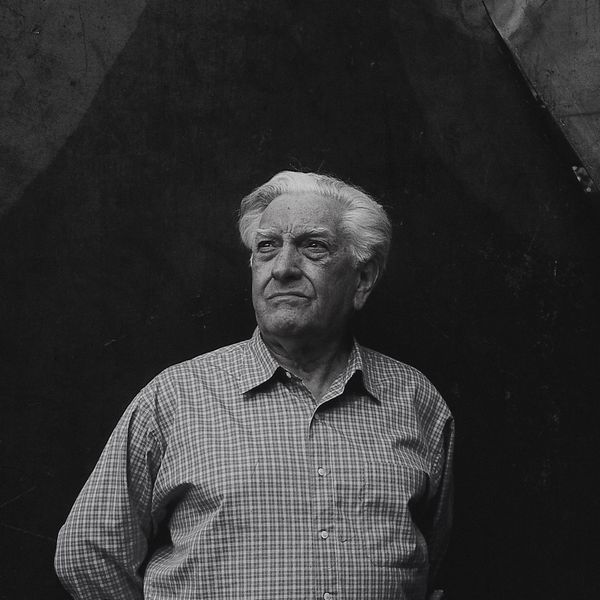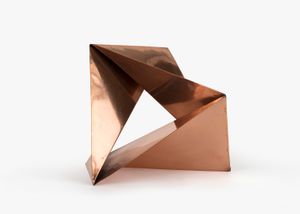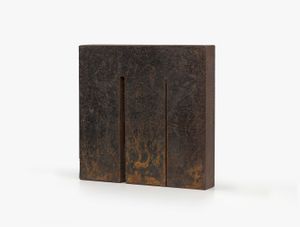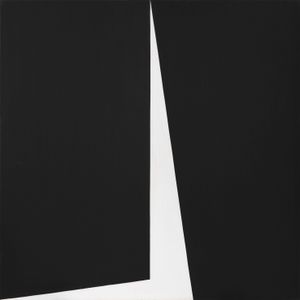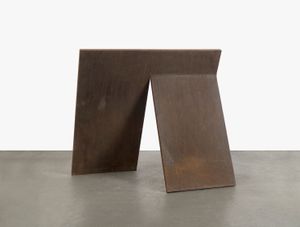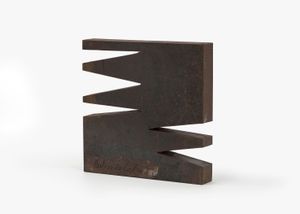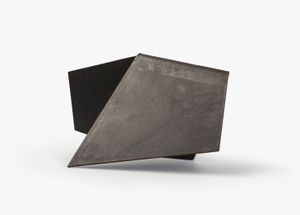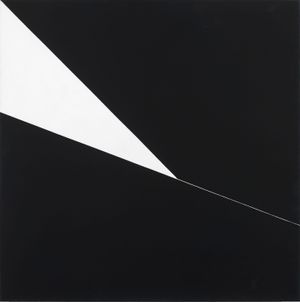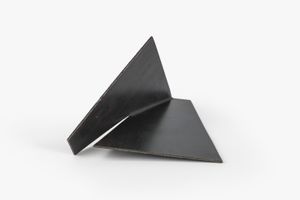Amilcar de Castro, who was born in Paraisópolis, Minas Gerais, in 1920 and died in Belo Horizonte in 2002, is a sculptor, graphic designer and artist whose legacy is an integral part of contemporary Brazilian art. He graduated in Law from the Federal University of Minas Gerais in 1945, but his destiny was tied to art, as he delved into drawing and sculpture studies at the Guignard School under renowned mentors such as Alberto da Veiga Guignard and Franz Weissmann.
His transition from figurative art to abstraction reflects a continuous exploration of form and materiality. His best-known works, especially from the 1950s onwards, are known for the innovative use of metal sheets which, through cuts and folds, acquire a new dimension of interaction with the surrounding space. This approach was influenced by the Brazilian Constructive Project and concretism, although Castro was not a member of the Ruptura and Frente groups.
His work as a designer is also notable, with the graphic reform of the Jornal do Brasil in the 1950s marking a turning point in Brazilian graphic design. Amilcar de Castro took part in important movements and exhibitions, such as the 1st National Exhibition of Concrete Art and the International Exhibition of Concrete Art in Zurich. He was awarded the prestigious Guggenheim Prize and has left his mark on numerous institutions and collections around the world.
The artist also had a distinguished academic career, contributing to the development of the next generation of artists as a professor at the Guignard School and UFMG. In his sculptural output, Castro resisted excessive rationalism, injecting a malleable and more human quality into the geometry with which he worked.
Amilcar de Castro's aesthetic reveals a constant search for the essence of forms and the organic interaction between material and space. His creative process is based on the principle of economy of means, favoring structural simplicity and clarity of composition. Castro's sculptures explore the tension between weight and lightness, fullness and emptiness, the permanent and the ephemeral. The absence of welding in his works emphasizes the integrity of the material and the artist's ability to extract spatial dynamics from a single piece of metal. He worked with the resistance and malleability of iron, creating works that, despite their apparent simplicity, reveal a complex interaction with light, shadow, and the environment. His material palette extends to include stainless steel and copper, exploring their reflective and textural properties. The cuts and folds in his sculptures are not only construction methods, but also artistic gestures that give rhythm and movement to the static pieces.
His drawings show an extension of his sculpture onto the two-dimensional plane, where the line takes on the sculptural function of dividing and defining space. They are characterized by a precision that mirrors his sculptural approach, with lines that can be seen as cuts in the paper, defining shapes and volumes with an economy of line. In all his artistic expressions, Castro maintained a consistent dialog with constructivist notions, while also exploring new directions, demonstrating a deep understanding of form and its relationship to the physical and perceptual environment.
Amilcar de Castro maintains a prominent place in the history of Brazilian art, not only for his sculptural work, but also for his impact on graphic art and art education. His studies and sculptures emphasize a fundamental relationship with material, space, and expression. To this day, his approach is considered a reference point for the understanding and appreciation of constructive and abstract art in Brazil.
